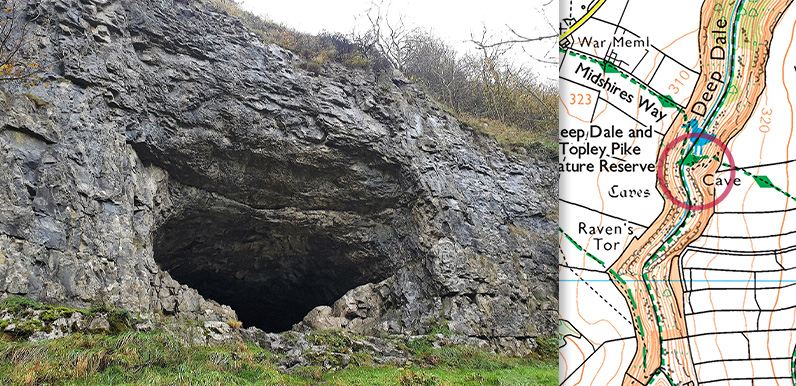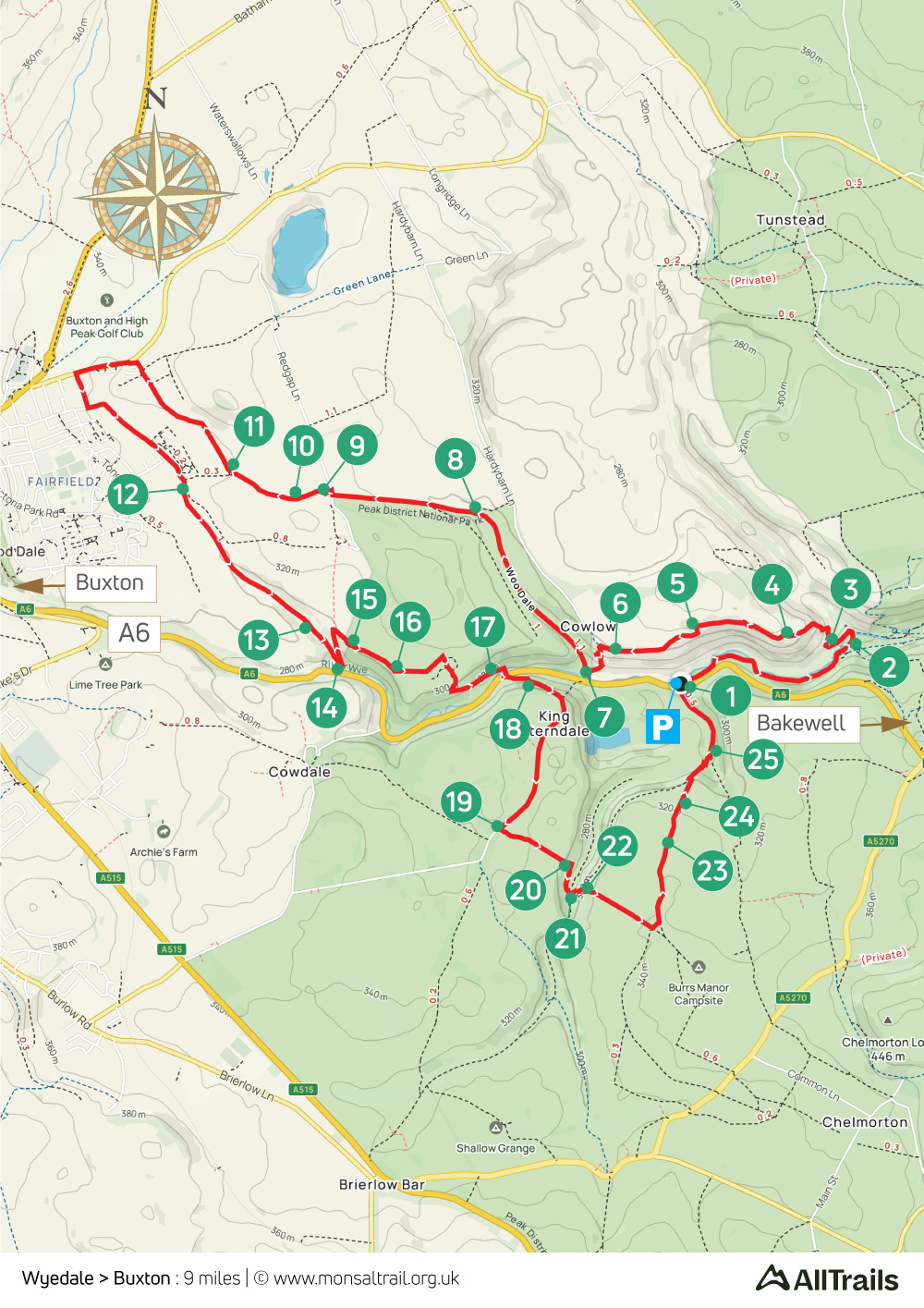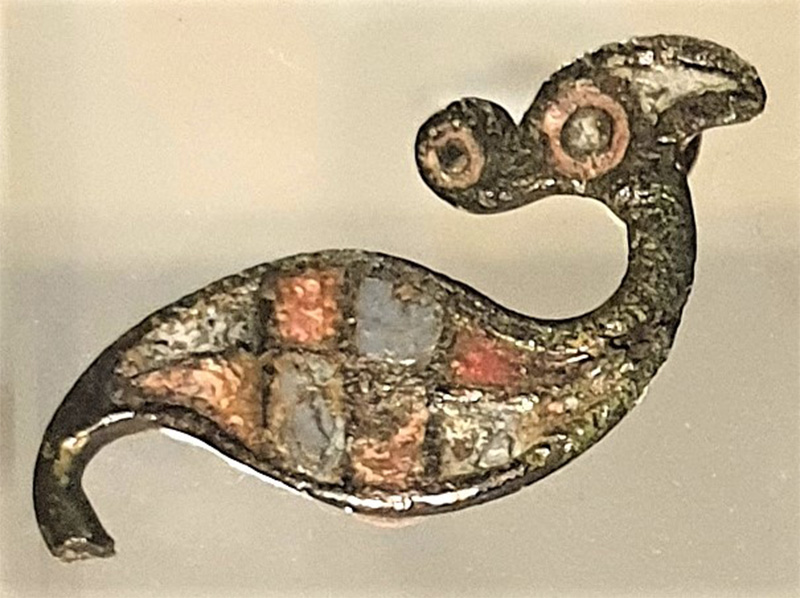Above: Thirst House Cave lies beside the footpath crossing Deep Dale, just southwest of King Sterndale.
Fissures in the limestone rock of the White Peak were ideal places for our ancient ancestors to shelter from both the weather and the many wild animals that once roamed the landscape.
There are two at the northern end of Deep Dale, close to Topley Pike Quarry; Thirst House Cave and Churn Hole Cave. Thirst was first known as Hob Hurst’s House after a goblin that was supposed to live there. In typically Derbyshire dialect, this became Th’Hurst House, and then Thirst House.
Above: Thirst House Cave is between points 21 and 2 on this map of the Wyedale to Buxton walk (click to enlarge).
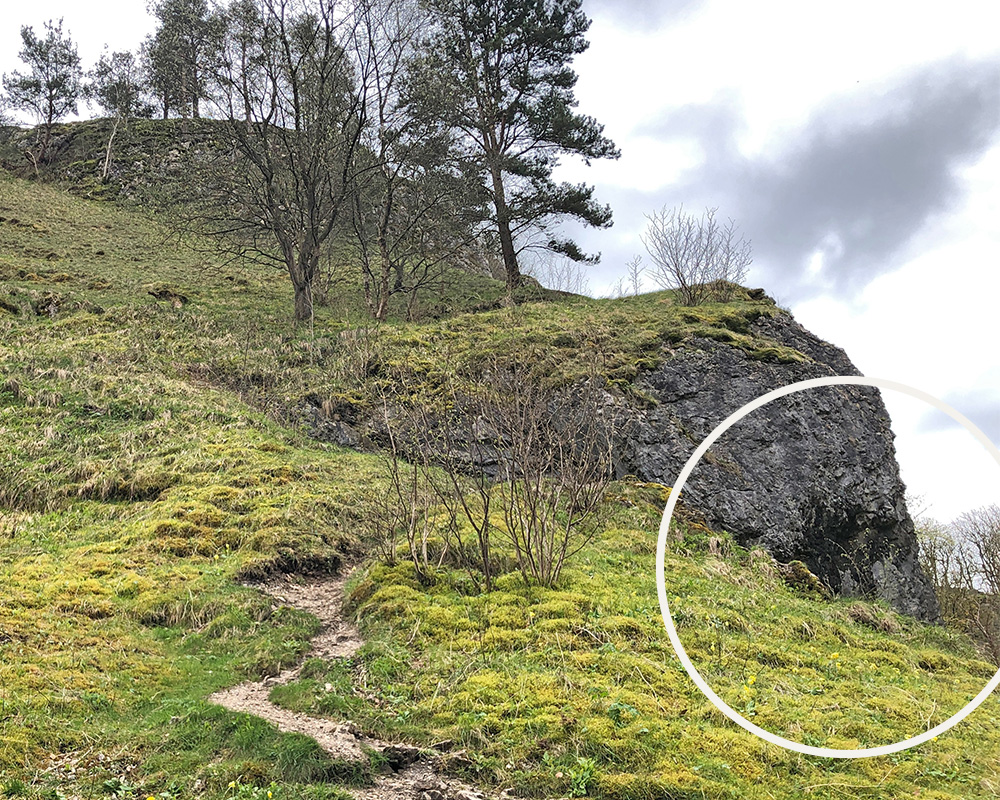
Above: The cave circled just a short distance from the footpath rising up the side of Deep Dale from King Sterndale.
The cave measures 58m (190ft) from the entrance to the rear. It was first excavated in the late 19th century by local amateur archeologists, Micah Salt and Robert Millets, following the discovery of a bear’s skull by some boys.
Roman finds
They found a number of Roman artefacts, including bronze jewellery, enamelled brooches, pottery fragments, coins and an iron and bone knife. But the initial discovery of a bear’s skull shows that the cave would have been used far further back in time than the Romans.
The finds were on display in Buxton Museum but unfortunately the museum was forced to close when structural problems were found with the building. And there’s currently no certainty that it will ever reopen, which is a great shame.
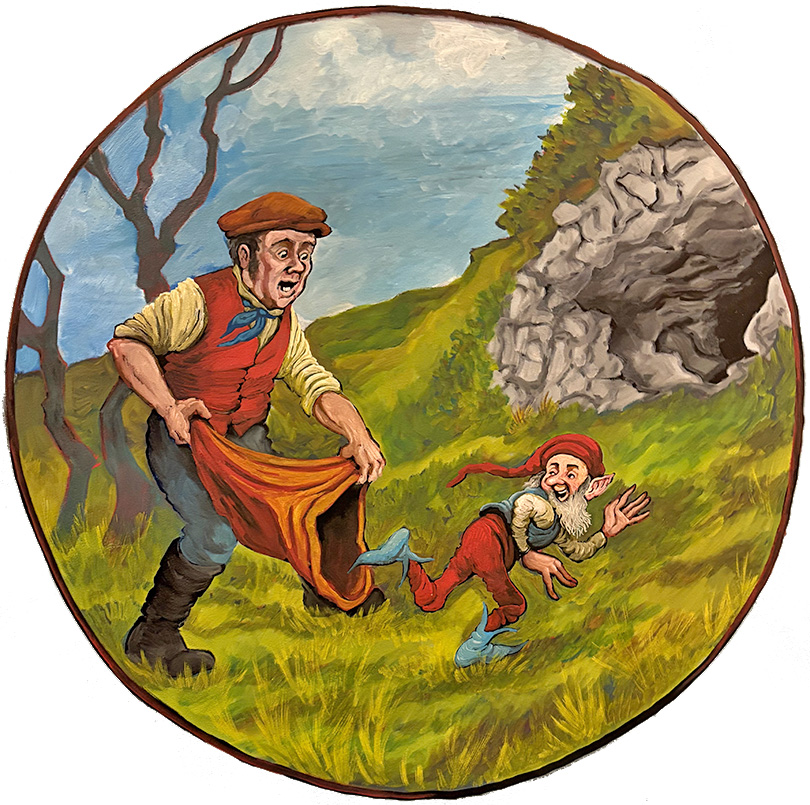
The Hob escapes
I recently came across this wonderful illustration of the Thirst House Hob in a Buxton coffee bar, alongside this excerpt from the book ‘Folklore of the Peak’;
The story tells of a farmer who, returning from a visit to his sister in Chelmorton, came across a Hob by the side of the track. Knowing that these small creeatutures would do manual work for humans in exchange for porridge & ale, he captured it in an empty sack, intending to take it home.
The Hob, however, was not keen on this plan, and pleaded with the farmer to let it go, which being a kindly sort, he did.
The Hob scampered off and disappeared into the cave, but as a token of gratitude to the farmer, bestowed magical healing properties on the nearby stream running through Deep Dale, where bathing on Easter Eve will allegedly cure ailments & illnesses.

